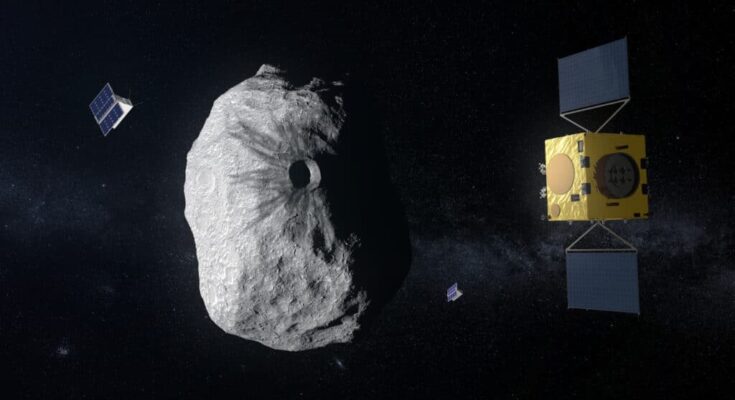
The asteroid mission, Hera, of Europe is set for lift off on Monday, October 7th, according to the European Space Agency (ESA). The launch will take place at NASA’s Kennedy Space Center in Florida and will be the first mission in the ESA’s planetary defense program. Hera’s objective will be to explore the rogue asteroid, Didymos, whose trajectory was already deflected by NASA in September 2022.
Now, Europe’s Hera asteroid mission will carry out various experiments on the asteroid and inspect it more closely. The mission has been described by the ESA as crucial to further our understanding of defending Earth before we face other threats from rogue asteroids.
The ESA’s Hera mission will focus on geological asteroid traits
The primary objective of the Hera mission is to study the geological and morphological characteristics of the rogue asteroid, Didymos, but on a secondary note, it will also test an asteroid deflecting technique devised by the ESA and NASA.
The Hera mission will run parallel to NASA’s Asteroid impact and Deflection assessment, which will make up humanity’s first line of defense to alter the trajectory of an asteroid.
Launch campaign update: #HeraMission is now encapsulated within its Falcon 9 fairing – the last time any human eyes ever see it! pic.twitter.com/czcJEhhiZa
— ESA's Hera mission (@ESA_Hera) October 4, 2024
What makes Hera so special is that it is the first European planetary defense mission ever. On a technical level, however, the mission is also extremely significant because it will be the first time CubeSats are deployed in a deep space mission.
These are small satellite platforms that will help observe Didymos from up close. The two designated devices are Juventas and Milani. It will be Juventas, an Italian-made probe, that will actually land on the rogue asteroid to investigate its morphological properties. Remarkably, Hera has been in the works since 2016 and has cost 350 million euros.
Studying the consequences of NASA’s deflection
Hera is the first time that a mission has returned to a small space body, mainly because the data that NASA’s mission was able to gather is still subject to uncertainties, meaning we don’t really know much about the object.
This might seem counterintuitive given that we already have quite good images of the rogue asteroid, but there is clearly much research that still needs to be undertaken.
For instance, scientists only have initial data on the conditions of the impact of NASA’s mission, but there are no final results of said impact and the response of the asteroid to the initial impact.
In fact, modeling and actual evaluation of NASA’s mission has yet to be measured because it was impossible to do so with the equipment in the initial mission. The plan with Hera is to ensure that the models that have been used thus far can be utilized yet again in future rogue asteroid missions.



